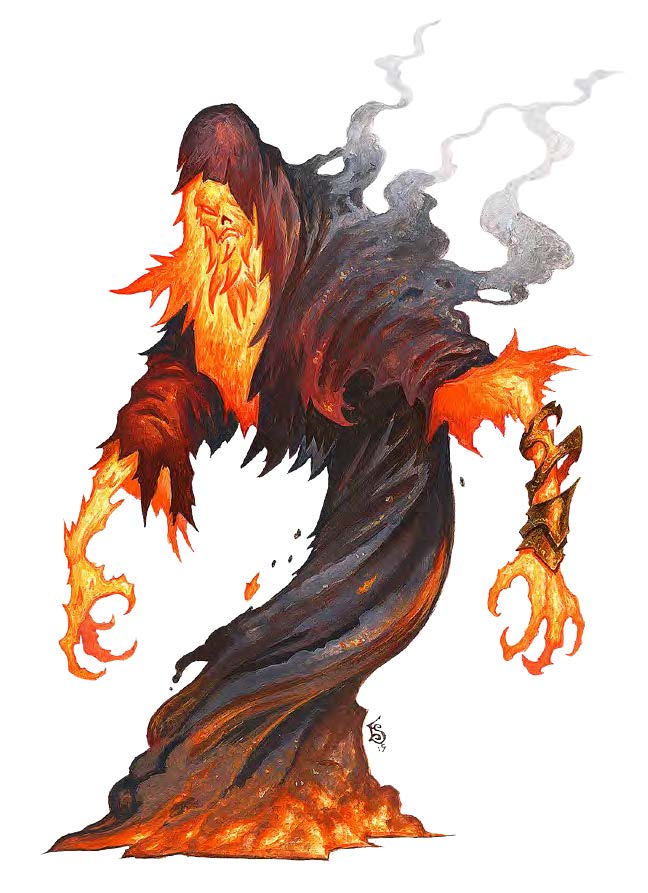
In a previous article we discussed encounter traps (Chilling Encounters). These complex traps turn a simple trap into an entire encounter, often with many things going on at once or each round on their own initiatives. But rather than constantly escalating chaos, there is something just as satisfying from those traps where each action the adventurers takes causes the next phase of the trap to activate.
Incremental traps are reminiscent of the death traps from horror movies or superhero comics, where each logical avenue of escape adds another dangerous obstacle to be conquered. Like a normal complex trap, they get worse with time, but unlike most other complex traps, their dangers are not obvious and often act in response to characters’ actions rather than on their own initiative.
Fires of Hell
Complex trap (level 11–16, deadly threat)
Bas-reliefs of whispering devils, roaring dragons, and other fell beasts related to fire are cast into iron panels that line this extremely warm 5-foot-wide, 80-foot-long hallway. Anyone touching the iron takes 7 (2d6) fire damage. Both the ceiling and floor are made of stone, and the ceiling is 9 feet high. Every 5 feet, stone blocks separate one panel from the next.
Trigger. The trap is activated when a weight greater than 5 pounds is applied to a pressure plate 25 feet down the corridor. The second time a weight greater than 5 pounds is applied to the pressure plate, the trap is triggered.
Initial Effect. When the trap is triggered, the stone blocks on either side of the iron panels reveal themselves to be sliding walls that block off a 5-foot square with victims inside. On the inside face of both walls near the ceiling are glyphs of warding cast at 5th level. Each has a spell glyph that is focused in the 5-foot space, triggering a silence spell and a hallow spell with the extradimensional interference effect. In addition, lava begins to pour from the mouths of the creatures in the wall. A creature takes 33 (6d10) fire damage when initially exposed and when it ends its turn touching lava.
Constant Effect (Lava). At the end of every round, the sealed off space fills a third of its volume. A creature fully submerged in lava takes 99 (18d10) fire damage.
Triggered Effect (Stone Walls). The stone walls are 6 inches thick and have AC 15 and 180 hp. They are immune to poison and psychic damage. With 50 or more of damage, a hole is created and lava pours into the side where the wall is damaged, forcing the would-be rescuer to succeed on a DC 20 Dexterity saving throw or be splashed by lava, taking 17 (3d10) fire damage. There is one additional sliding wall on either side of the initial two.
In addition, iron cables run through the stone, so destroying the rock doesn’t allow one to easily move out of the trapped space.
Triggered Effect (Iron Cables). The taut iron cables have AC 18 and can be severed by doing 30 damage. Like the walls, they are immune to poison and psychic damage. Unfortunately, severing a cable causes a second stone wall to slam shut 5 feet behind the rescuer, trapping them inside with the original victim. Lava immediately begins to fill this space. If the glyphs have not been destroyed, their effects spread through the hole.
Countermeasures. Each part of the trap has its own countermeasures:
- Glyphs of Warding. A dispel magic spell can dispel one of the glyphs as a 5th-level spell. Note the silence effect makes this particularly challenging. If a wall is completely destroyed, the glyph on it is also destroyed.
- Iron Cables. A Medium creature can slip between the cables with a successful DC 20 Dexterity (Acrobatics) check. Small creatures get advantage on this check.
- Lava. The rough iron panels can be climbed with a successful DC 12 Strength (Athletics) check, causing the climber to suffer 7 (2d6) fire damage for touching the hot iron but allowing them to get above the lava. The lava pouring from the bas-relief can be plugged if the lava can be rapidly cooled. An attack that does at least 35 cold damage causes the molten rock to solidify and cease filling the room. At the beginning of each round after the lava is sealed off, roll 1d20 as the pressure behind the plug builds up. On a 16–20, the newly formed rock plug is forced out, and the lava flow resumes.
- Pressure Plate. A successful DC 25 Wisdom (Perception) check notes that one stone tile looks like it can be depressed. A successful DC 20 Dexterity (thieves’ tools) check disables the pressure plate from its initial activation, but failing the check by 5 or more immediately triggers the trap.
- Stone Walls. A successful DC 20 Strength (Athletics) check can force a blade or other wedge under one of the walls before it extends into the hallway, preventing it from further sealing off the hallway. At the beginning of each round after a wall is triggered, roll 1d20 as the wall tries force past the obstruction. On a 16–20 the wedge does not hold, and the wall slams shut.
